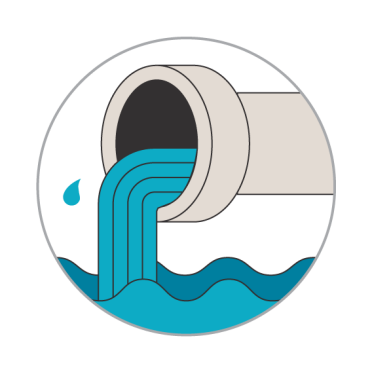Discharge to land
We are developing material to support implementation of the standards following their enactment and will keep this page updated.
Summary of standard
The proposed approach was to establish a discharge to land environmental performance standard that:
- sets out a risk-based framework for discharging treated wastewater to land sets out treatment requirements to reflect each risk category for wastewater that is discharged to land
- imposes monitoring and reporting arrangements.
Read the technical advice that informed the proposed discharge to land standard.
Implementation and guidance
The discharge to land standards will be implemented through future resource consents for public wastewater treatment plants and networks as they come up for renewal.
The requirements of the discharge to land standard must be implemented as part of any new resource consent for existing plants and networks, as well as consents for new wastewater infrastructure.
The certainty generated by wastewater standards will streamline these consent processes and decisions.
Plain language definitions and guidance will be developed for key elements or requirements of the standards, such as:
-
sampling requirements (e.g. continuous monitoring and templates for reporting)
-
clear indications where standard provisions are to be adopted as consent conditions
-
parameters of a breach and expected responses.
More detailed guidance will be developed, including best practice examples for procedural elements of the standards. An example is below.
-
The discharge to land standard is premised on a site-specific risk assessment. This process will require assessment of risks and potential discharge sites’ capabilities to manage those risks. To ensure a nationally consistent approach and outcome, guidance will be developed that outlines the proposed rationale, methodology and assumptions.
This page will be updated over time as the guidance is developed following the finalisation of the standards.
Granting resource consents
Consenting authorities such as regional councils implement the standards through consents as they come up for renewal. Consenting authorities maintain responsibility over how discharges to land and water should be managed, e.g. whether they should be treated as a non-complying activity.
Where a regional plan enables discharges of treated wastewater to land or water, a consenting authority cannot grant a resource consent that imposes requirements that are different from those in the standards. This includes treatment limits for core contaminants, as well as monitoring and reporting requirements. Where a consent is approved, it must be issued for a 35-year duration.
Consenting authorities maintain discretion over matters not covered by the standards, e.g. the volume and timing of treated wastewater being discharged and limits for other contaminants.
-
We are developing material to support implementation of the standards following their enactment and will keep this page updated.Find out more

-
We are developing material to support implementation of the standards following their enactment and will keep this page updated.Find out more

-
We are developing material to support implementation of the standards following their enactment and will keep this page updated.Find out more
